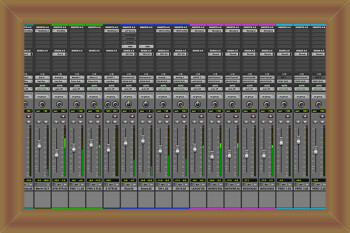I feel a bit compelled to add a brief parenthesis after what I wrote at the end of the previous article. So, in the next couple of articles I will not limit myself to working with space but rather to the mix as a whole.
Width vs. depth
There is something you shouldn’t forget in the quest for the famous “3D sound”: all your efforts are aimed at a two-speaker system, at best. Thus, you could think of it as working on a blank canvas. A canvas that has two limits, namely its width and length. And yet, a good artist can manage to create spectacularly realistic three-dimensional images with a simple gray pencil. How can he infuse such sense of depth into an image? Quite simply by respecting some rules of perspective: the horizon line, the convergence towards vanishing points, etc.
I’m not much of a visual artist myself, but observing the work of some artists in the field has allowed me to better understand space when it comes to mixing audio. In fact, just like perspective rules for an image, there are also some basic principles that, applied to audio, allow you to go beyond the apparent limits of stereo.
The first rule to consider is the following: no matter how realistic you want the end result to be, you need to always respect the width/depth dichotomy to get a wide and deep sound. By this I mean that the wider you want an element of a mix to sound, the shallower it ought to be. Conversely, if you want to send an instrument to the back of the mix, it will have to be slim. This, in terms of sound, could be equated to a vanishing point.
How can you apply this in a practical manner during mixdown? Well, first of all you need to consider the pan settings. The wider and/or closer an element ought to be, the more it should be placed on the sides. Likewise, the farther away you want it to be, the closer to the center it ought to be.
Now, as I’m sure you are aware, some reverbs sound larger than others. Due to a principle we just saw, these reverbs will be very useful to highlight the sense of width of one or several elements, but they are worthless when you want to work with depth. In order to push an instrument to the back of the mix, you need to use a reverb with a limited stereo width or even a mono reverb, with the aux bus pinned to the center. Nevertheless, do note that you can also use a “wide” reverb to work with depth, making use of a small trick: a stereo image management plug-in that can help you reduce the stereo width.
Okay, I’ll let you sit on that until next time, when we talk about the notion of contrast.

